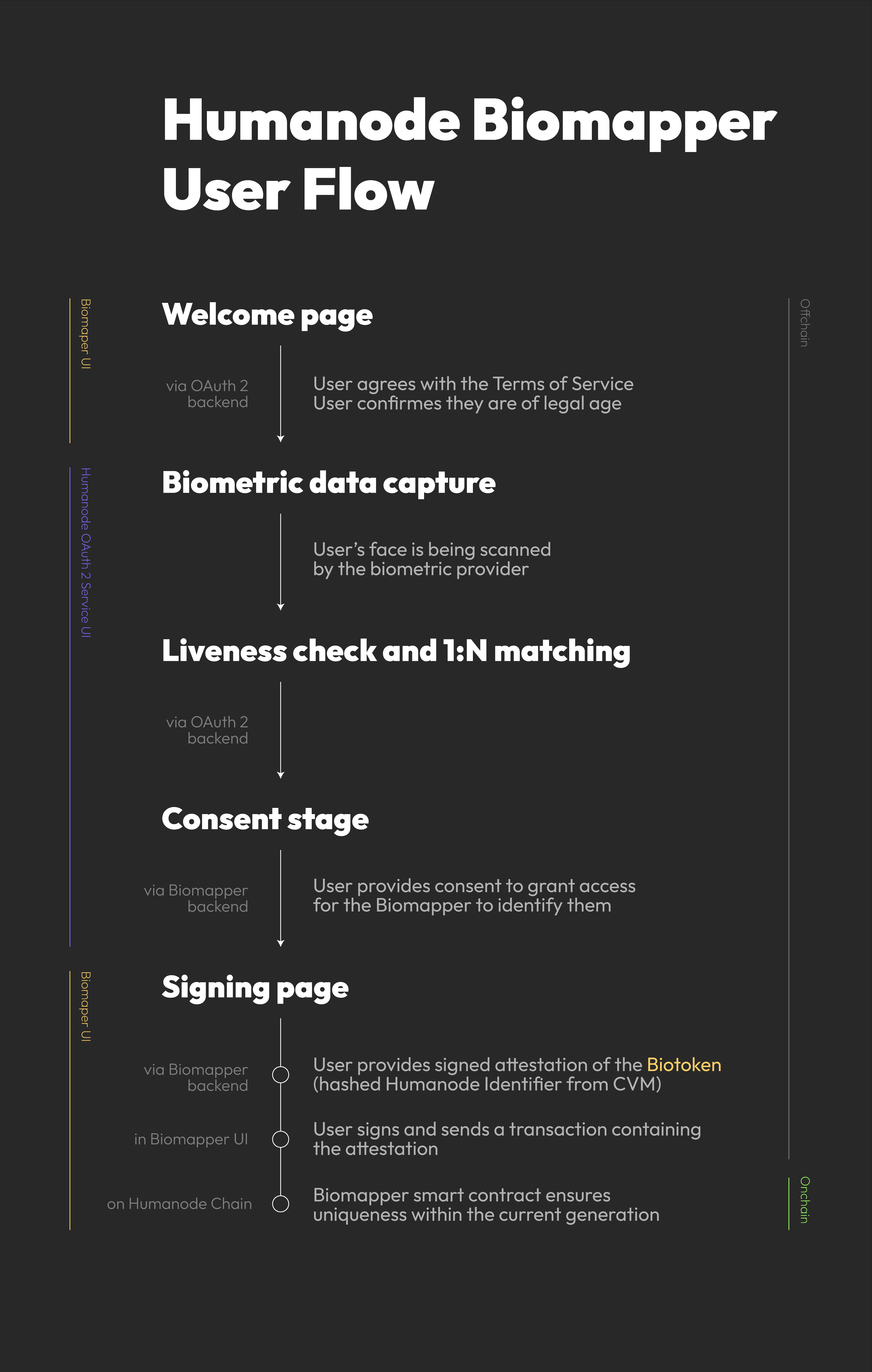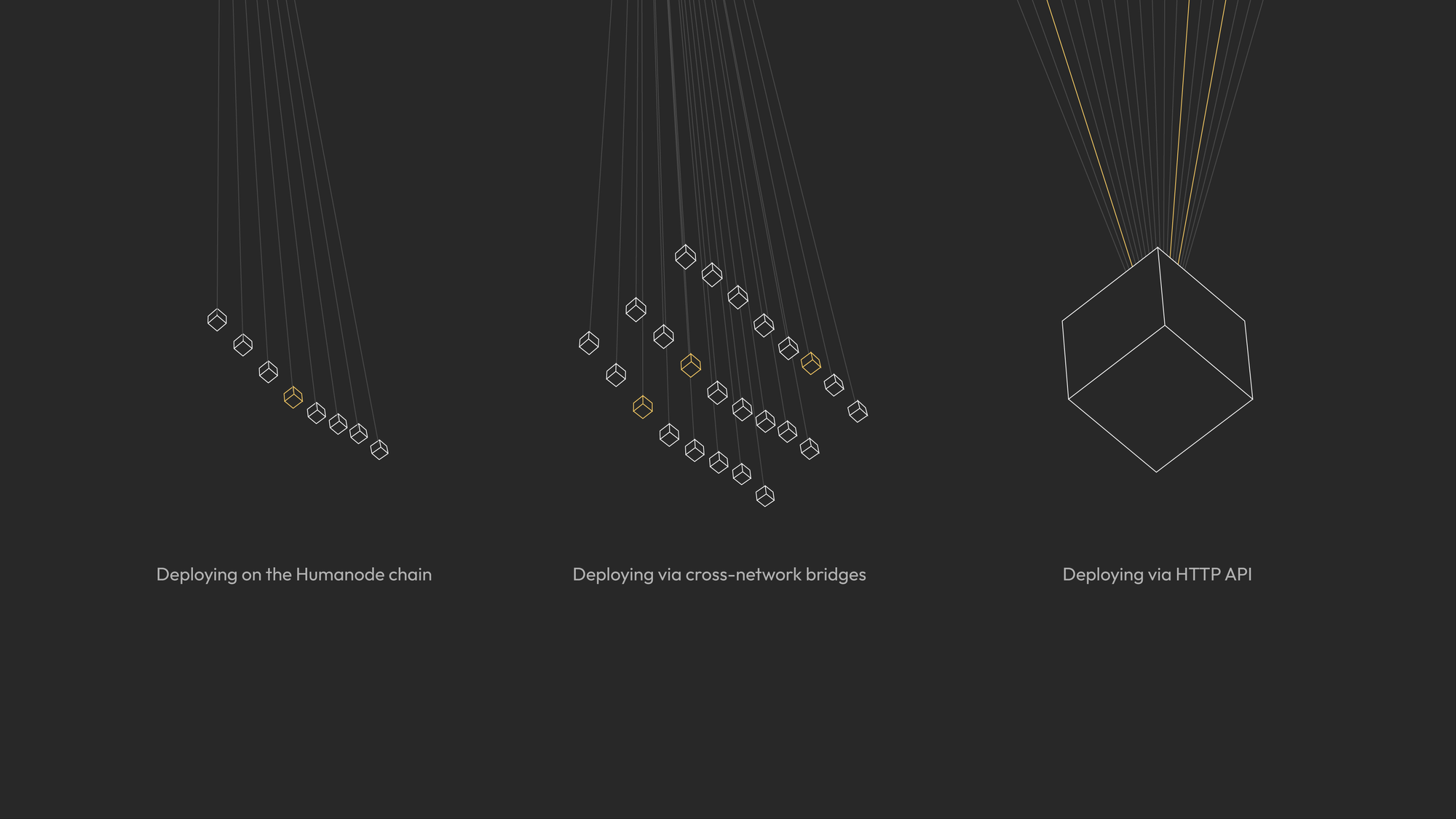Biomapper: The Developer's Toolkit for Sybil-Resistant Sign-Ups

Have you ever been to an amusement park where each ride and attraction guarantees a one-of-a-kind experience? A memory to enjoy, right? Now let's take this to the digital universe, where Apps are the rollercoasters and Ferris wheels, drawing crowds eager for innovation and excitement.
But here's the twist: how do you ensure that each visitor is genuinely unique and not just a fake rider using counterfeit tickets in camouflage? In the Web 2.0 era, traditional methods like KYC and centralized biometric checks tackled this, but as we dive into the vast, uncharted waters of Web3, the challenge intensifies.
In the Web3 universe, every DApp (Decentralized application) is a decentralized ride. Think of DApps as the most thrilling rides in the digital amusement park. They're innovative, decentralized, and offer a level of engagement and autonomy that traditional apps can't match. But just like the most sought-after rides in an amusement park need a reliable way to verify tickets for their riders, DApps require a system to ensure that each user is unique without intruding on their anonymity.
In the world of Web3, it's super important to establish Proof of Personhood to keep things fair and safe. Why you ask? Initially, people want to keep their anonymity. They want to have fun and interact without having to tell everyone their name or other personal details. At the same time, some use anonymity to ruin the fun for others and don’t want to take responsibility for it.
Users in Web3 value privacy immensely and are often reluctant to share personal information. This preference for anonymity, while understandable, clashes with the need for unique user verification. It's a digital problem: how do you ensure that each person on a DApp is as unique as a fingerprint, yet as private as a shadow?
Traditional sign-up methods don't quite fit the bill in this environment. The KYC process, akin to a thorough security check at the park entrance, might discourage visitors who came for the promise of anonymity and freedom. On the other hand, common methods like wallet address sign-ups are the equivalent of a basic ticket check – too easy for someone to bypass and ride again under a different pseudo.
This is where Humanode’s Biomapper plays a significant role. A gatekeeper for this high-tech park. Equipped with cryptobiometric technology, it confirms each visitor's authenticity without demanding to peek under their masks of pseudo-anonymity.
As we delve deeper into this exploration, we will not just talk about technology; we'll be discussing a transformative approach to how users interact with DApps, reevaluate traditional methods, and describe how DApps can use Onchain Biomapping to ensure one person per sign-up without disturbing anonymity and privacy.
So let's take this journey together.
Current Methods and Their Shortcomings
Let's take a closer look at how DApps currently lets users sign up. Each, in its own way, tries to solve the puzzle of establishing Proof of Personhood, but often, they end up creating more riddles than answers.
Crypto Address and Google Signup: The Mask with Many Faces
First up are the crypto address and Google signup. It's the classic mask that anyone can wear. Simple, straightforward, and, unfortunately, too easy to duplicate. Imagine it as a basic paper ticket to our digital amusement park – it gets you through the gate, but there's nothing stopping someone from photocopying it and handing it out to a crowd. It lacks the magic ink of uniqueness, making it vulnerable to Sybil attacks – where one user becomes an army of duplicates, flooding the system with fake identities.
KYC: The Overzealous Security Guard
Then there's the Know Your Customer (KYC) process. Picture this as the overzealous security guard at the park entrance, armed with a clipboard and a long list of personal questions. KYC digs deep – perhaps too deep for comfort. It demands your name, photo, ID documents, and more, leaving you exposed and wary. While it's effective in sifting out duplicates and establishing personhood, it strips away the cloak of anonymity, leaving users feeling like they've walked into a spotlight rather than a park.
Centralized Biometric Solutions: The High-Tech Turnstile with a Flaw
Lastly, we have centralized biometric solutions. These are the high-tech turnstiles at the entrance, that scan fingerprints or facial features. They sound futuristic and secure, but there's a catch. Centralization here is like putting all your eggs in one basket and then handing that basket to someone else. Users' biometric data, once collected, is stored in centralized databases, making it a potential target for breaches and misuse. Moreover, these systems often lack the crucial element of liveness detection, leaving them susceptible to being tricked by sophisticated deep fakes and replicas.
The Common Thread: Privacy vs. Security
In all these methods, we find a common thread – a trade-off between privacy and security. They either fail to safeguard anonymity or fall short in protecting against identity duplicates. The EVM address is like a flimsy disguise easily seen through, KYC is like giving away your life story to a stranger, and centralized biometrics are akin to entrusting your keys to an unreliable gatekeeper.
In this landscape, the quest for a method that not only protects against Sybil attacks but also preserves the precious anonymity of users becomes not just a need but a quest for a digital Holy Grail. The question remains: is there a solution that can traverse this tightrope, balancing the need for both proof of personhood and the shield of anonymity?
As we venture deeper, keep this puzzle in mind – it's the key to unlocking the potential of Proof of Personhood in Web3.
Unlocking the Future with Decentralized Biometrics
Imagine a world where your identity is protected by an invisible shield, one that's powered by the same tech that keeps cryptocurrencies safe. That's what decentralized, cryptographically secure biometric solutions are all about. Instead of storing your info (like your face or fingerprint) in one place where it could be hacked, this method scatters the info in pieces, encrypted and safe, across a network.
Why This Matters to You
This approach tackles two big issues head-on: keeping you safe from identity theft and making sure you're the only you out there in the digital world. With these solutions, there’s no central treasure chest of data for hackers to target or federal authorities to identify. Your biometric data is turned into a complex puzzle that only you have the key to solve, keeping your digital identity both secure and private.
Here's how it works: Your unique biometric data is transformed into a secure code through advanced cryptography. When you need to prove it's you, the system checks this code without needing to access or store your actual biometric data. It's like having a secret password that's so complex, that even seeing it won't help someone else figure it out.
This leap towards decentralized biometric verification is the sweet spot for anyone who wants to keep their online life private while still proving they're a real, unique person. It's a game-changer for the Web3 space, where your right to privacy is a big deal, but so is the need to show you're not just another bot.
Exploring Humanode Biomapper
At the heart of Biomapper is a mechanism that encrypts and secures biometric data on the blockchain using cryptobiometrics. This data will be linked to a unique identifier in the form of an EVM address (0x…). The biometric data referenced here is facial biometrics inherently unique to every individual.

The mechanism ensures that the individual's unique facial 'signature' can be used to prove the uniqueness and liveness of the user. At the same time, the actual biometric data remains completely private, securely encrypted in Confidential Virtual Machines. Consider it like zero-knowledge proof (ZKPs), where the system can verify the authenticity of the information without needing to know the specific information itself.
Application in DApps
When a user signs up or engages with a DApp, Biomapper links their facial biometrics to their EVM address, verifying the individual is uniquely human. Access will be blocked if the same user attempts to register a different EVM address, as one individual is linked to only one address.
For DApps, from finance to gaming, integrating Biomapper can enhance security and trust within their applications by ensuring each user is unique. This mechanism helps build a safer Web3 environment where interactions and transactions can be trusted, all while keeping user anonymity at the forefront.
The protection of your data is handled by Confidential Virtual Machines (CVMs). Think of these as secure containers where information is processed and encrypted, making it accessible only to those with the right key. This setup ensures that even if data needs to be verified, it remains protected, preserving privacy and security.
Through the lens of Humanode’s Biomapper, we see a nuanced approach to proof of personhood that balances the need for security with the desire for privacy. As we delve into this technology, it becomes clear that it represents a thoughtful evolution in how we establish proof of personhood without compromising anonymity.
Humanode Biomapper vs. Traditional Methods
Having explored the inner workings of Humanode's Biomapper, let's now place it side by side with traditional Web3 signup methods. This comparison isn't just about tallying scores; it's about understanding the shifts in privacy, security, and the fight against Sybil attacks.
Potential DApps Beneficiaries
After exploring the advantages of onchain private biometric verification, let's dive into something that hits close to home for all of us: keeping user anonymity front and center while ensuring our platforms are free from bots and duplicates. This is where Humanode's Biomapper shines, but let's break it down by sector to see its impact.
1- DeFi: The Trust Conundrum
In DeFi, the balance between anonymity and trust is like walking a tightrope. Users want to keep their privacy intact but also need to trust that they're interacting in a fair, bot-free environment. Biomapper is the ideal solution, ensuring that every transaction, vote, or liquidity pool contribution comes from a real person without ever revealing their identity. It's like verifying the player without needing to see their cards.
A key application of Humanode Biomapper in DeFi is seen in Humanode’s Non-Linear Liquidity Pool Staking. Here, participants are required to link their EVM address with their biometric data using Biomapper, guaranteeing that each individual can only establish a single account. This approach safeguards the liquidity pool against Sybil attacks and ensures equitable participation, allowing everyone an equal opportunity to generate passive income.
2- Gaming: Real Wins in Virtual Worlds
Imagine a gaming platform where every achievement and every item trade is certified legit because behind every avatar is a verified human player. Biomapper makes this possible without ever compromising on the player's desire to stay anonymous. This level of verification amps up the value of in-game assets and achievements because they're earned in a truly competitive, human-vs-human environment.
3- Social Networks: Genuine Connections
In the realm of decentralized social networks, authenticity is key to meaningful interactions. Yet, the cornerstone of Web3 is the ability to interact without giving away personal info. Biomapper allows users to prove they're real humans behind those anonymous profiles, fostering a community built on genuine interactions and trust, without the shadow of bots or fake accounts.
4- Marketplaces: Secure and Private Transactions
For DApps facilitating marketplace transactions, whether it's NFTs or tokenized assets, trust in the authenticity and uniqueness of each user is crucial. Biomapper provides a way to ensure every bid, purchase, or trade is by a verified human, maintaining the integrity of the marketplace while holding user anonymity sacred.
5- Addressing Concerns Across the Board
The common thread here is the challenge of establishing Proof of personhood to prevent Sybil attacks without compromising on what makes Web3 revolutionary: user anonymity. Traditional methods either peel away at this anonymity or leave too much room for exploitation. Biomapper addresses these concerns head-on by verifying the human without needing to know the person, a kind of "prove you're real, stay invisible" approach that's perfect for the ethos of Web3.
A Call to Innovate
Our journey from traditional user sign-up methods to adopting Biomapper reflects a significant evolution in the Web3 space. Imagine a pathway leading from the well-trodden grounds of KYC and centralized biometrics — where security measures often compromise user privacy — to the innovative shores of Biomapper, offering a balanced approach.
Biomapper represents a step forward in utilizing blockchain's capabilities to offer solutions where user uniqueness is verified without sacrificing privacy. This approach allows DApps to cultivate authentic community engagement, safeguarding interactions against duplicates and Sybil attacks.
For you, the builders and dreamers of the Web3 world, integrating something like Biomapper into your DApps isn’t just an upgrade; it’s a leap toward the future we all believe in. A future where platforms are secure, interactions are genuine, and yet, everyone gets to wear their digital mask, preserving the anonymity that's so prized in our space.
However, the full potential of technologies can only be realized with real-world testing. And we warmly invite all the devs and builders to test it out by deploying Biomapper. Let's build that world together.
To learn how to integrate Biomapper on your already EVM-compatible DApps or deploy your DApps on the Humanode chain:


